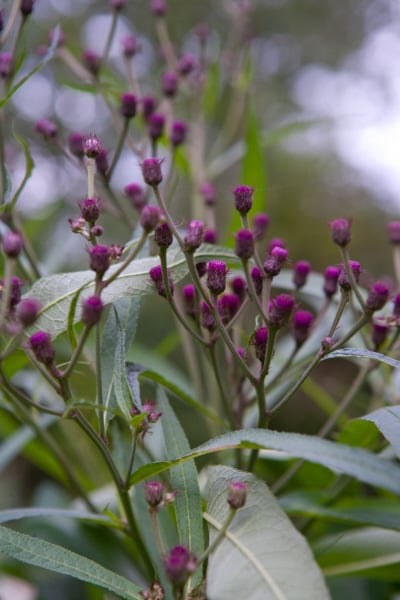Vernonia noveboracensis
New York ironweed
A tall, herbaceous perennial to 2m with stiff, upright stems carrying narrow, pointed leaves and topped with open, branched clusters of purple, thistle-like flowers in late summer and early autumn

Buy this plant
Size
Ultimate height
1.5–2.5 metresTime to ultimate height
2–5 yearsUltimate spread
0.5–1 metresGrowing conditions
Moisture
Moist but well–drained, Poorly–drainedpH
Acid, Alkaline, NeutralColour & scent
| Stem | Flower | Foliage | Fruit | |
| Spring | Green | |||
|---|---|---|---|---|
| Summer | Purple | Green | ||
| Autumn | Purple | Green | ||
| Winter |
Position
- Full sun
- Partial shade
Aspect
South–facing or West–facing
Exposure
Exposed or Sheltered Hardiness
H7Botanical details
- Family
- Asteraceae
- Native to GB / Ireland
- No
- Foliage
- Deciduous
- Habit
- Columnar upright
- Genus
Vernonia are annuals, perennials, climbers, sub-shrubs, shrubs and trees, though only the perennials are in cultivation. They have upright stems, simple, stalkless leaves and flat branched heads of tubular purple or reddish pink, occasionally white, flowers
- Name status
Correct
- Plant range
- E USA & New Mexico
How to grow
Cultivation
Grow in any light, moist soil in full sun or partial shade
Propagation
Propagate by seed or division
Suggested planting locations and garden types
- Cottage and informal garden
- Prairie planting
- Flower borders and beds
Pruning
Deadhead regularly to prolong flowering
Pests
May be susceptible to slugs
Diseases
Generally disease-free
Get involved
The Royal Horticultural Society is the UK’s leading gardening charity. We aim to enrich everyone’s life through plants, and make the UK a greener and more beautiful place.